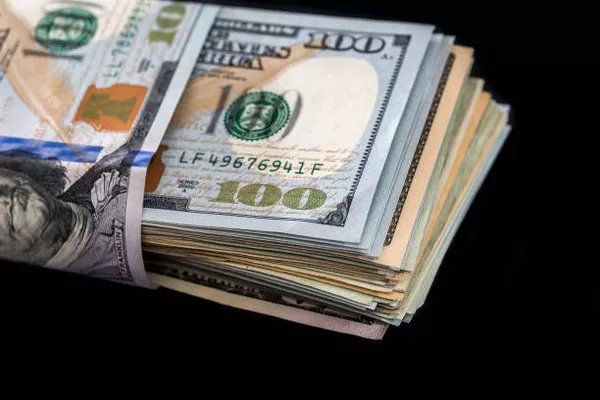In an increasingly globalized world, currency exchange is a fundamental aspect of international transactions, whether for travel, business, or investment purposes. For those dealing with United States Dollars (USD), finding the best exchange rate is crucial for maximizing the value of their money. While numerous options exist for exchanging currencies, banks remain a popular choice due to their accessibility, reliability, and range of services. However, not all banks offer the same exchange rates, prompting individuals and businesses to compare and evaluate their options carefully. In this article, we delve into the factors influencing USD exchange rates provided by banks and identify key considerations for determining which bank offers the best rates.
Understanding Exchange Rates:
Exchange rates represent the value of one currency in terms of another and fluctuate based on various economic factors, including inflation, interest rates, political stability, and market sentiment. Banks typically set their exchange rates based on the prevailing interbank rates, adding a margin to cover their costs and generate profit. This margin, often referred to as the spread, varies among banks and can significantly impact the final exchange rate offered to customers.
Factors Affecting Exchange Rates:
Interbank Rates: Banks derive their exchange rates from interbank markets, where large financial institutions trade currencies among themselves. These rates serve as the benchmark for currency trading and reflect the supply and demand dynamics in the global foreign exchange market.
Economic Conditions: Macroeconomic indicators such as GDP growth, unemployment rates, inflation, and central bank policies influence a country’s currency value and, consequently, its exchange rate against other currencies.
Central Bank Interventions: Central banks occasionally intervene in the foreign exchange market to stabilize their currency’s value or address economic imbalances. These interventions can impact exchange rates and may influence banks’ pricing strategies.
Bank Policies: Individual banks may have their own policies and strategies regarding currency exchange, including the level of markup applied to interbank rates, minimum transaction amounts, and fees associated with currency conversion.
Evaluating Banks for USD Exchange Rates:
When comparing banks for USD exchange rates, several factors should be considered to determine which institution offers the most favorable terms:
Exchange Rate Transparency: Look for banks that provide transparent information regarding their exchange rates, including the spread applied to interbank rates. Transparent pricing allows customers to assess the true cost of currency conversion and avoid hidden fees.
Competitive Rates: Compare the exchange rates offered by different banks to identify those offering competitive rates with minimal markup. While banks typically aim to generate profit through currency exchange, some may offer more favorable rates to attract customers or maintain market competitiveness.
Fee Structure: In addition to the exchange rate, consider any fees or commissions charged by the bank for currency conversion. Some banks may levy flat fees or percentage-based commissions on transactions, which can erode potential savings from favorable exchange rates.
Convenience and Accessibility: Assess the convenience and accessibility of banking services, especially if frequent currency exchange is required. Factors such as branch locations, online banking capabilities, and customer support channels can influence the overall banking experience.
Exchange Rate Stability: While competitive exchange rates are desirable, it’s also essential to consider the stability of rates over time. Banks that frequently adjust their exchange rates or exhibit significant volatility may pose challenges for budgeting and financial planning.
Additional Services: Evaluate the range of additional services offered by banks, such as currency hedging options, multi-currency accounts, and foreign exchange risk management solutions. These services can provide added flexibility and convenience for managing international transactions.
See Also Does Australia Use Dollar Bills?
Case Study: Comparing Exchange Rates Among Leading Banks
To illustrate the process of evaluating USD exchange rates offered by banks, let’s consider a hypothetical scenario involving three prominent banks: Bank A, Bank B, and Bank C.
Bank A:
Transparent exchange rate pricing, with a clearly defined spread of 1.5% above interbank rates.
Minimal fees, consisting of a flat $10 commission per transaction.
Convenient online banking platform and widespread branch network.
Exchange rates updated daily, with moderate stability observed over the past six months.
Bank B:
Competitive exchange rates, with a narrower spread of 1% above interbank rates.
No transaction fees for currency conversion, offering cost savings for customers.
Limited branch presence but robust online banking services for remote transactions.
Exchange rates subject to periodic adjustments based on market conditions, resulting in moderate volatility.
Bank C:
Relatively higher spread of 2% above interbank rates, impacting the overall cost of currency conversion.
Variable fee structure, with commissions ranging from 0.5% to 1% depending on transaction size.
Extensive branch network and dedicated foreign exchange desks for personalized service.
Exchange rates displayed in real-time on the bank’s website, reflecting immediate market fluctuations.
See Also The Prediction for USD in 2025
Conclusion:
In conclusion, selecting the best bank for USD exchange rates requires careful consideration of various factors, including transparency, competitiveness, fees, convenience, stability, and additional services offered. By evaluating these factors and comparing exchange rates among leading banks, individuals and businesses can make informed decisions to optimize their currency exchange transactions and maximize the value of their funds. Additionally, staying informed about macroeconomic trends and currency market dynamics can provide valuable insights for anticipating exchange rate movements and effectively managing foreign exchange risk.


